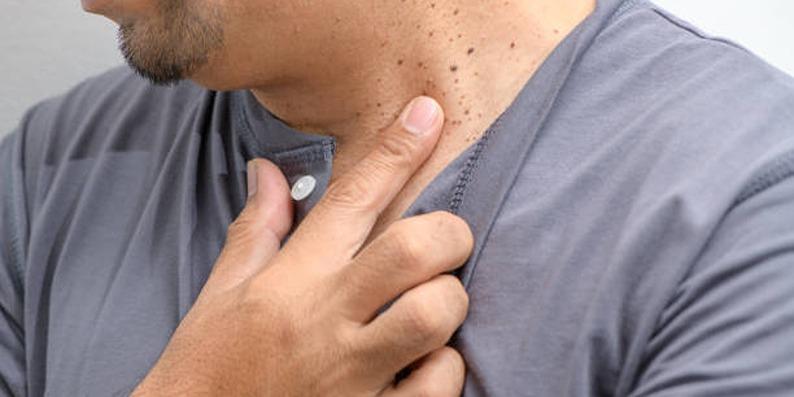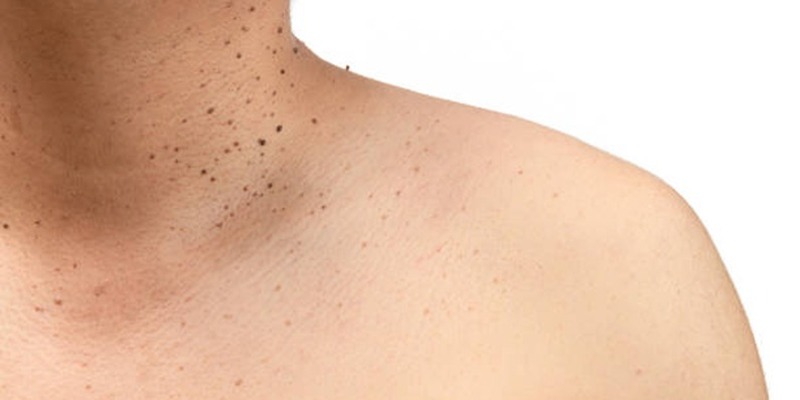How to Remove Skin Tags Safely and Effectively
Advertisement
The neck along with armpits and eyelids commonly develop skin tags which represent harmless small growths. Skin tags do not bring pain to people but they generate minor discomfort. The primary motivation for tag removal by people is cosmetic. The removal of skin tags can be done through at-home safe methods or with assistance from medical professionals.
What Are Skin Tags?
 The human body develops skin tags as small harmless soft growths that mainly occur near regions where body parts overlap including the neck and underarms as well as the eyelids and beneath breasts and groin area. Flesh-colored and darker skin tags appear across the body either smooth or wrinkled. Although skin tags pose no health threats they bother certain individuals especially during jewelry or clothing wear.
The human body develops skin tags as small harmless soft growths that mainly occur near regions where body parts overlap including the neck and underarms as well as the eyelids and beneath breasts and groin area. Flesh-colored and darker skin tags appear across the body either smooth or wrinkled. Although skin tags pose no health threats they bother certain individuals especially during jewelry or clothing wear.
Caring about the appearances of their skin or the potential discomfort caused by irritation prompts some people to get skin tags removed. Several protective methods for skin tag removal include both at-home and professional practices.
Why Do Skin Tags Form?
Common Causes of Skin Tags
Skin tags develop due to a combination of factors, with friction being the most common cause. When skin rubs against itself, it creates irritation that can lead to the formation of these small growths. Other contributing factors include:
- Genetics: If your family members have skin tags, you may be more likely to develop them.
- Obesity and Weight Gain: People who are overweight tend to have more skin folds, increasing friction and the likelihood of developing skin tags.
- Aging: Skin tags become more common as people age, especially after 40.
- Diabetes and Insulin Resistance: Some studies suggest a link between insulin resistance and an increased risk of skin tags, particularly in those with type 2 diabetes.
Are Skin Tags Harmful?
Skin tags are generally harmless and do not pose any medical risks. However, they may become irritated if they are frequently rubbed by clothing, jewelry, or seat belts. Some people experience discomfort if a skin tag gets twisted, causing it to become swollen or painful.
Although skin tags are non-cancerous, it is important to have any unusual or changing growths examined by a doctor. If a skin tag becomes red, starts bleeding, or changes in appearance, consult a healthcare professional to rule out any other skin conditions.
Best Methods for Removing Skin Tags
Removing skin tags can be done safely and effectively using various methods, depending on individual preferences and the size or location of the skin tag.
1. Over-the-Counter Treatments
Many people prefer to remove skin tags at home using over-the-counter treatments. These options are non-invasive and relatively inexpensive:
- Skin Tag Removal Creams: Some creams contain ingredients that gradually dry out the skin tag, causing it to fall off. However, results may take several weeks.
- Freezing Kits: Cryotherapy kits use liquid nitrogen to freeze the skin tag, similar to professional treatments. After a few days, the tag typically falls off.
- Medicated Patches: Some adhesive patches contain ingredients designed to shrink the skin tag over time. These patches must be worn consistently for several days or weeks to be effective.
2. Home Remedies for Skin Tag Removal
Home remedies are popular but are not always supported by scientific evidence. Some of the most common home treatments include:
- Apple Cider Vinegar: Applying apple cider vinegar to a skin tag with a cotton ball may help shrink and dry it out over time. However, it can irritate the skin, particularly for those with sensitive skin.
- Tea Tree Oil: Some people believe that applying tea tree oil daily can help shrink skin tags. The oil has antimicrobial properties, but its effectiveness for skin tag removal is unproven.
- Garlic Paste: Crushed garlic is sometimes used to remove skin tags naturally, but it may cause skin irritation or a burning sensation.
3. Professional Skin Tag Removal
For safe, efficient, and effective skin tag removal, consulting a doctor or dermatologist is the best option. Medical procedures ensure immediate results while minimizing the risk of infection or irritation. Here are the most common methods used by professionals:
- Cryotherapy (Freezing): Cryotherapy is a fast, virtually painless procedure where liquid nitrogen is applied to the skin tag, freezing it on contact. Over the following days, the frozen tag shrinks and naturally falls off. This technique is particularly effective for smaller skin tags.
- Cauterization (Burning): In this method, a dermatologist uses a specialized tool to burn off the skin tag. This approach not only removes the tag but also seals the skin, preventing bleeding and lowering the risk of infection. Cauterization is often preferred for larger skin tags.
- Surgical Removal (Cutting): For larger or more problematic skin tags, a doctor may opt for surgical removal using sterilized scissors or a scalpel. This method is quick, requires minimal recovery time, and is often performed under local anesthesia to ensure comfort.
- Laser Removal: Laser removal uses concentrated light energy to break down the skin tag's cells. This precise and effective technique minimizes scarring, though multiple sessions may be required for complete removal.
Tips for Preventing Skin Tags
While skin tags are not always preventable, you can reduce your chances of developing them by following these steps:
Maintain a Healthy Weight
Since excess weight can lead to increased skin friction, maintaining a healthy weight may reduce the risk of skin tag formation.
Keep Skin Dry and Clean
Moisture and friction can contribute to skin tag development. Drying skin folds thoroughly after showering and using talcum powder in areas prone to rubbing may help.
Wear Loose-Fitting Clothing
Tight clothing can create friction, leading to skin tags. Wearing loose, breathable fabrics reduces irritation and prevents unnecessary rubbing.
Use Moisturizers and Barrier Creams
Applying a light moisturizer or barrier cream can reduce friction and irritation, particularly in areas where skin rubs together.
Monitor Skin for Changes
If you notice new skin tags forming frequently, keep track of them and discuss any concerns with your doctor, especially if you have diabetes or other underlying health conditions.
When to See a Doctor
 Most skin tags do not require medical attention, but there are situations when consulting a doctor is a good idea:
Most skin tags do not require medical attention, but there are situations when consulting a doctor is a good idea:
- Unusual Growths: If a skin tag changes in size, shape, or color, it is best to have it checked by a dermatologist.
- Pain or Bleeding: If a skin tag becomes irritated, bleeds frequently, or causes discomfort, medical removal may be necessary.
- Uncertainty About the Diagnosis: If you are unsure whether a growth is a skin tag or another type of lesion, a doctor can provide a proper diagnosis.
Conclusion:
Skin tags are common and harmless, but they can be annoying or unsightly for some people. While many over-the-counter treatments and home remedies exist, professional removal is often the safest and most effective option. Preventative measures such as maintaining a healthy weight and keeping skin dry can reduce the likelihood of developing skin tags. If you are unsure about a skin growth or want a quick and safe removal method, consulting a doctor is the best approach.
On this page
What Are Skin Tags? Why Do Skin Tags Form? Common Causes of Skin Tags Are Skin Tags Harmful? Best Methods for Removing Skin Tags 1. Over-the-Counter Treatments 2. Home Remedies for Skin Tag Removal 3. Professional Skin Tag Removal Tips for Preventing Skin Tags Maintain a Healthy Weight Keep Skin Dry and Clean Wear Loose-Fitting Clothing Use Moisturizers and Barrier Creams Monitor Skin for Changes When to See a Doctor Conclusion:Advertisement












